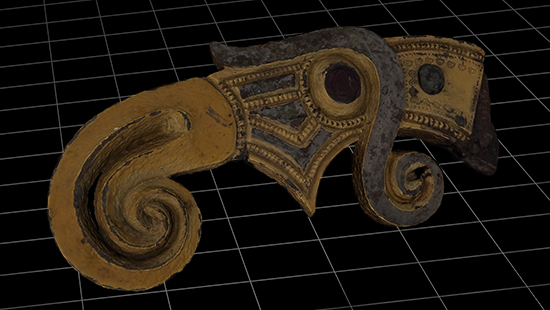The research projects of the MCH explore thematics within the three strategic research ares of the museum and are often connected to one or more of the research groups of the MCH.
The point of departure for the reasearch projects of the MCH is the relationship between research, administration and dissemination of research, and the unique opportunities of the museum to perform basic research on objects and collections which are defined as cultural heritage, and their places of origin.
Current projects
-
ADED – Archaeological Digital Excavation Documentation
ADED establishes a repository for Norwegian excavation data, and makes it available for queries and download.
-
ArCHe – Archaeological Coastal Heritage: Past, present and future of a hidden prehistoric legacy
The Doctoral network ArCHe will explore Europe's Stone Age coastal heritage and develop best practices for its preservation.
-
Avaldsnes Royal Manor Project
The main research aim is to investigate the royal manors’ position in the early Norwegian kingdom, as well as in the kingdom’s prehistory in the first millennium AD.
-
BItFROST
Bridging Research Across Heritage Studies.
-
DIRE – Data Visualization Remote Access
DIRE will afford a more effective access to the best infrastructures for 3D visualisation at the University of Oslo through coordinating access to equipment. It will use new technology to encourage advanced use through remote access to virtual infrastructures.
-
Eidsborg Rock – Production and trade of whetstone in the Viking Age
Hell is to cut with a dull knife – to harvest with a blunt scythe or to fight with an unsharpened sword. By the 9 th century, the ‘hell-averting’ whetstones from Eidsborg, Telemark, are found in Viking Age towns and centres throughout Northern Europe. Paradoxically, less is known about the surplus production of outfield resources, such as whetstones or iron, at a regional level.
-
Exhibition Architecture Project
The project investigates how an exhibition, its objects and architecture balance artistic fascination, spiritual experiences and dogmatic content in one and the same room.
-
Historicizing Intelligence
The purpose of this project is to study the historical development of intelligence tests, IQ-scales and concepts of intelligence that such tests are based on, and have helped to produce.
-
Human Sacrifice and Value
Why human sacrifice? The primary objective of the project is to generate a greater working knowledge of the nature of human sacrificial rituals as contextualised through the perspective of value. The project will forge a deeper understanding of the social mechanisms underpinning the slippery relationship between sacred acts of sacrifice and profane forms of violence.
-
HumGIS
The purpose of the HumGIS project is to establish an e-infrastructure and researching tools that enables researchers in the humanities to georeference their own data.
-
IPERION-HS
Towards a European research infrastructure for heritage science.
-
Making a Warrior: the Social Implications of Viking Age Martial Ideologies
In order to understand how the warrior ideology affected the Viking societies, this research project will study warrior groups in a larger cultural context to understand the relationship between them and the societies they were part of, their daily lives, social relationships and different types of social groups.
-
Saving Oseberg
The project documents the wooden artefacts from the Oseberg find and investigates possible conservation strategies to re-treat and preserve this iconic heritage for the future.
-
TexRec – Virtual Reconstruction, Interpretation and Preservation of the Textile Artefacts from the Oseberg Find
In 1904, a burial mound, situated on the Oseberg farm near Tønsberg in the South-East of Norway, was excavated. Beside a well preserved Viking ship, the skeletons of two women were found, accompanied by a comprehensive collection of grave goods. Ceremonial as well as daily life objects give a unique insight into the Viking world.
-
The impact of food culture in Medieval towns (FOODIMPACT)
This project is the first major study of urban food culture in medieval Norway. Our main research question is: how did food culture facilitate the emergence of an urban identity?
-
Thing Site Project Hove-Hundorp
What kind of place was Hundorp in Gudbrandsdalen in pre-Christian times?
-
Ui3D: Understanding and Immersion in 3D
UI3D aims to serve humanities and social science scholars working with cultural heritage, artefacts, inscriptions on objects and storytelling interfaces.
-
UniMus:Kultur
UniMus:Kultur will create a new version of the common artefact database that has been in use since 2004.
-
Viking Nativity: Gjellestad Across Borders
The research project Viking Nativity: Gjellestad Across Borders aims to contextualise this exciting Viking ship burial and the Gjellestad site historically and explore its socio-political dimensions.












